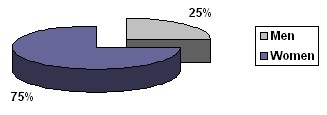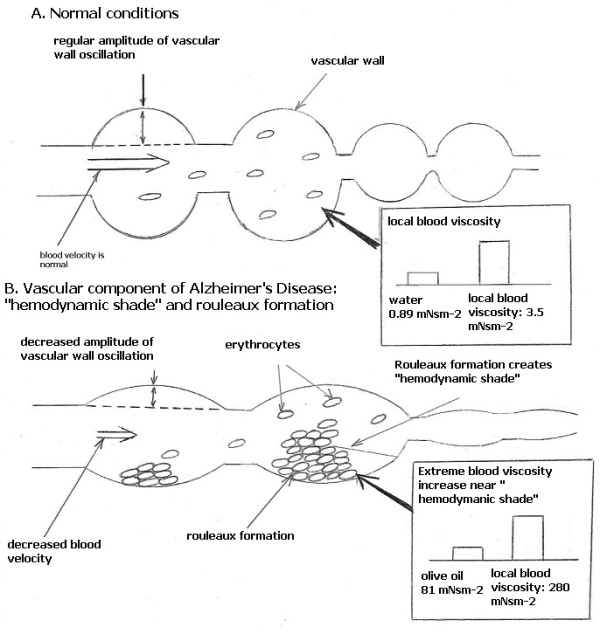
Polycythemia vera, rouleaux formation and Alzheimer's disease
Polycythemia vera is one of the conditions that increases blood viscosity due to increased number of red blood cells. To the best of my knowledge, there is no published research linking polycythemia vera and Alzheimer’s disease.
Using ICD-9-CM methodology, it was calculated that there were 80 (0.001%) patients discharged with both polycythemia vera and Alzheimer’s disease in 2001. These findings are not surprising as polycythemia vera is a rare condition[103]. According to one study the incidence of polycythemia vera was found to be 1.9 per 100,000. Age-related estimates would not be appropriate to discuss here as per Agency for Health Care Research and Quality requirement not to report any cell counts below 10 (which is the case with polycythemia vera).
The proportion of women diagnosed with both ischemic stroke and Alzheimer’s disease was substantially higher than the proportion of men with the same diagnosis (68% versus 32%)
Polycythemia vera is characterized by increased rouleaux formation and the number of rouleaux increases with decreasing shear stress. This trend becomes even more pronounced as the shear stress approaches zero. Rouleaux continue to form inside what I call the “hemodynamic shade”. This “hemodynamic shade” creates a stagnant zone that can be characterized by a secondary flow and a boundary. Hemodynamic stress outside this zone, however, is still significant enough to destroy and entrain rouleaux. The “hemodynamic shade” zone can also be characterized by a significant deterioration of mass exchange due to the attachment of rouleaux to the vessel wall. This may decrease the permeability of the endothelium and decrease the rate of removal of lipids and lipoproteins, which in turn can lead to the formation of lipid stripes directed along the blood flow and located in the “hemodynamic shade” of the original attached rouleaux[50]. The escalating formation of rouleaux continues within the entire “hemodymanic shade” zone.
[50] Caro CG. The mechanics of circulation. edn. Oxford: Oxford University Press, 1978.
[103] Ania BJ, Suman VJ, Sobell JL et al. Trends in the incidence of polycythemia vera among Olmsted County, Minnesota residents, 1935-1989. Am J Hematol 1994; 47(2):89-93.



